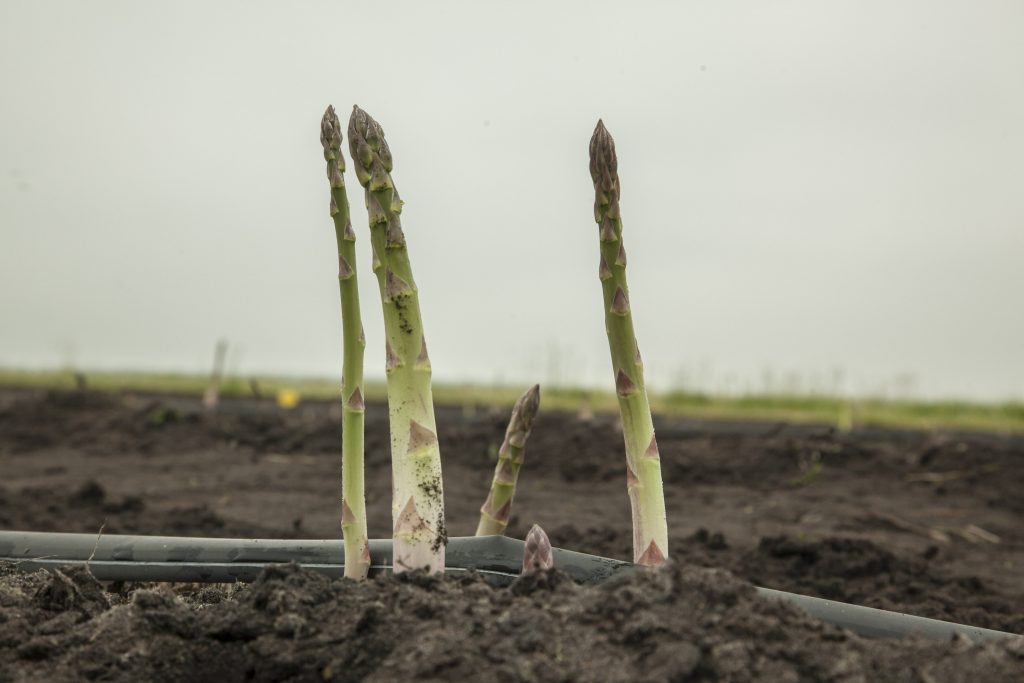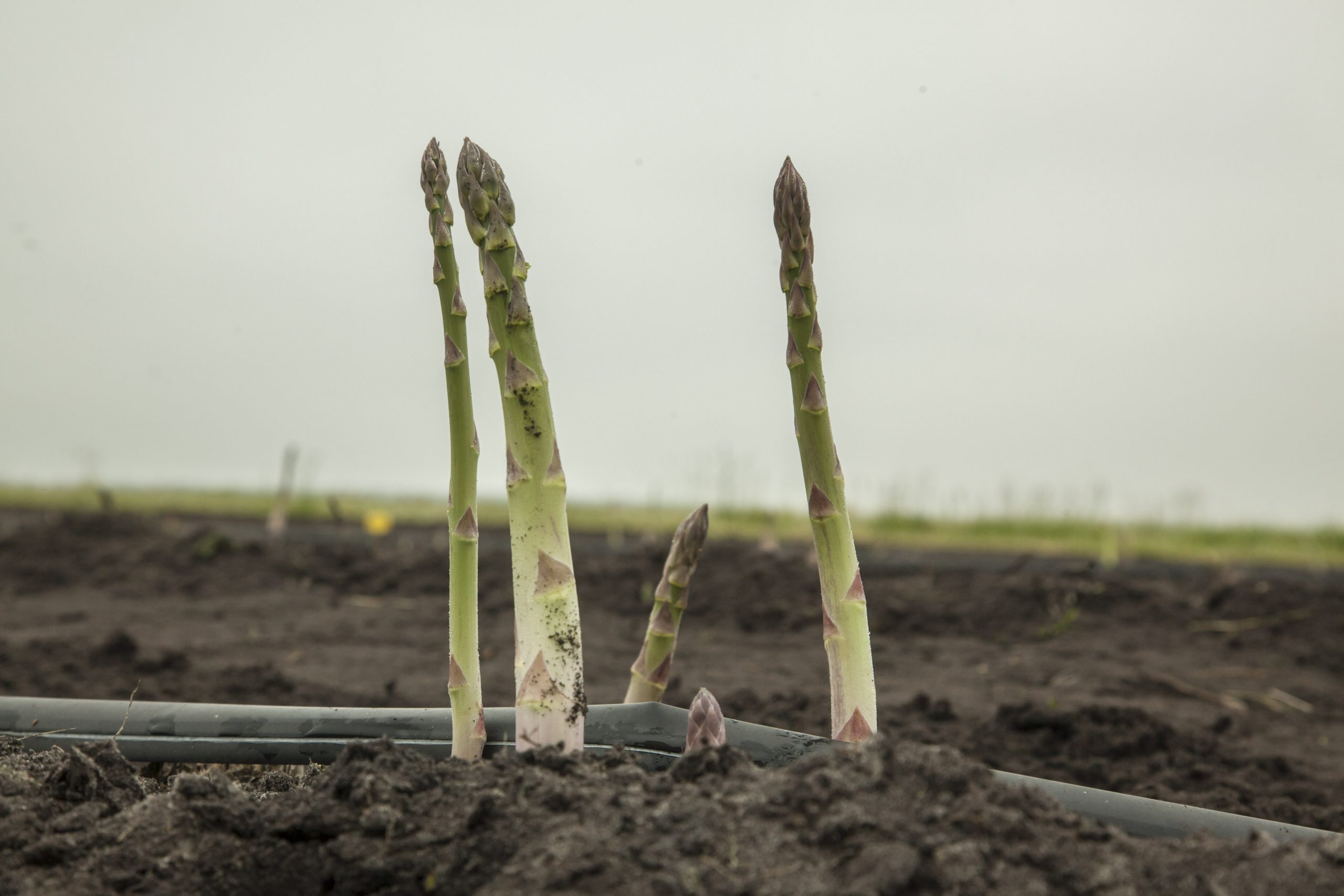6 ways to counter climate change
1/ Change the varietal range
When establishing an asparagus plantation, it is necessary to reflect on the choice of varieties, as well as on the setting of the asparagus and its management, with particular attention to irrigation. The varieties are characterised by their different cold needs during their vegetative rest period. Colder areas or temperate climates, such as northern European countries (e.g. Germany, the Netherlands, France) and those in North America (US, Canada) require 1,000 hours of cold (under 7oC), while intermediate areas, i.e. with a Mediterranean climate (e.g. Spain, Italy, Middle East, California, Mexico, Australia) need between 500 and 600 hours, and hot zones or warm areas (e.g. Peru, Philippines) have no need for cold at all. It is likely that global warming in temperate zones will alter the current varietal range in Northern Europe and North America. The varieties chosen will be less demanding of cold in order to facilitate their annual storage and ensure an economically satisfactory lifespan. For green varieties in particular, an increasingly important criteria will be tip closure rather than flowering under the effects of heat. Improving the quality of the spear is currently a major goal for all breeders.
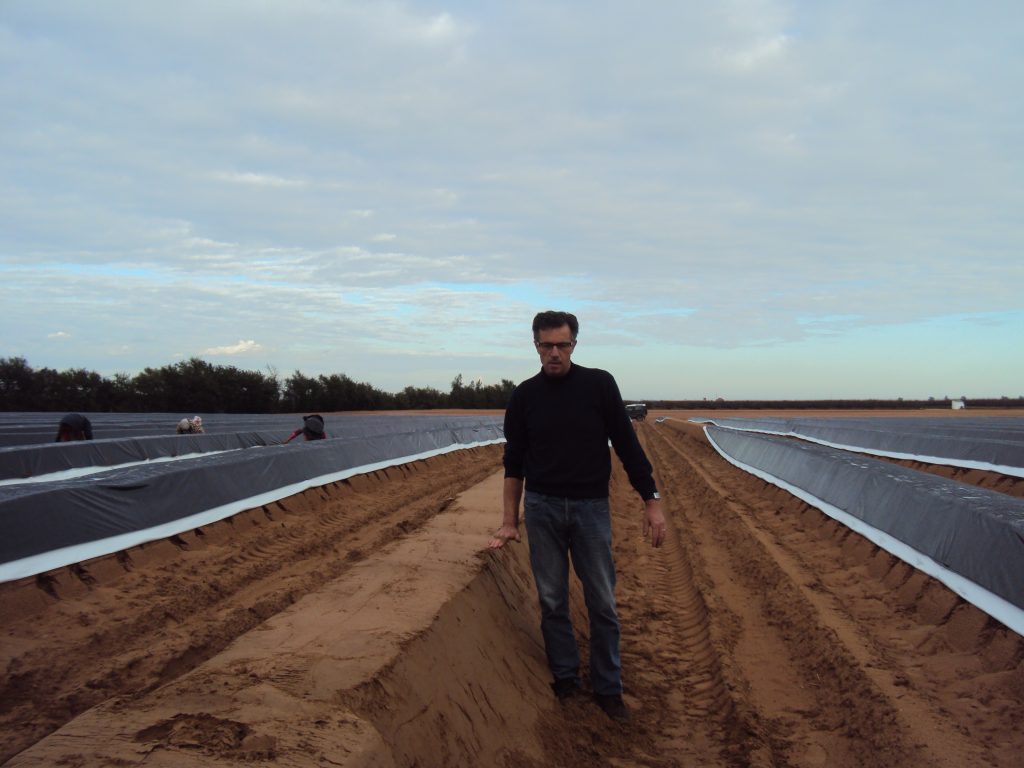
2/ High ridges to limit excess water
Even if average temperatures are likely to increase, the overall rainfall of some areas, especially in temperate climates, should remain stable. However, the precipitation regime could alter, with very heavy rainfall accumulations in autumn and winter. This consideration is driving interest in planting on ridges (see box).
Ridge cropping is used to address water accumulation caused by very heavy rainfall, which could become increasingly more frequent. With this technique, planting is conducted at between 25 and 30 cm above ground level. Ridge cropping also allows natural drainage. Asparagus crowns are always found outside of the wet zone during wet and rainy winters or springs (see Asparagus World n°2/2020). A higher bed also results in more exposure, which leads to faster drying. Localised irrigation is a must in order to concentrate moisture at the foot of the plants. With this method, about 10% more input will be required on the row and per hectare. Another consideration is planting depth. Reducing depth also lowers the risks associated with excess moisture (asphyxiation, root diseases, etc.). Precocity can improve with faster soil warming: 1 cm less in planting depth = 1 day more precocity.
3/ Optimise Irrigation
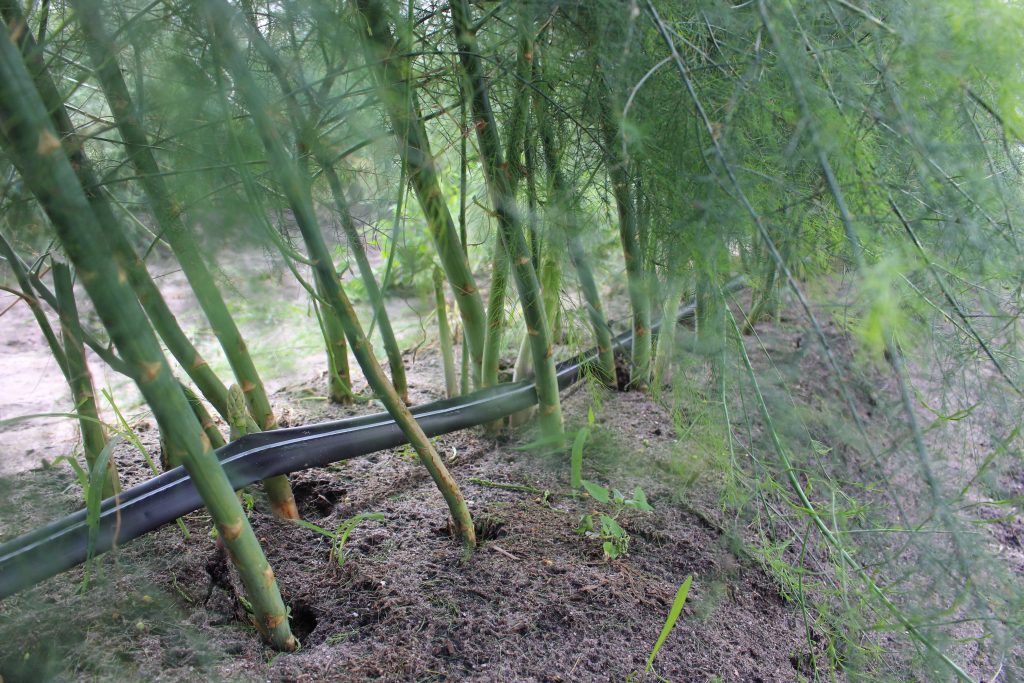
Irrigation provides new roots with moisture at the plateau level during harvest; this is mainly for green asparagus, but also for white. Each new spear produces 1 to 3 roots at its base. Close monitoring of root development is required to ensure constant humidity and allow the right humidity at depth. If these new roots are in drought, this will result in a lack of calibre, wrinkled spears, and loss of tip quality; in very harsh drought conditions, the spear can become completely dehydrated. On the other hand, supplying water ensures better calibres and yields and less flowering of the tip.
4/ Culture Management
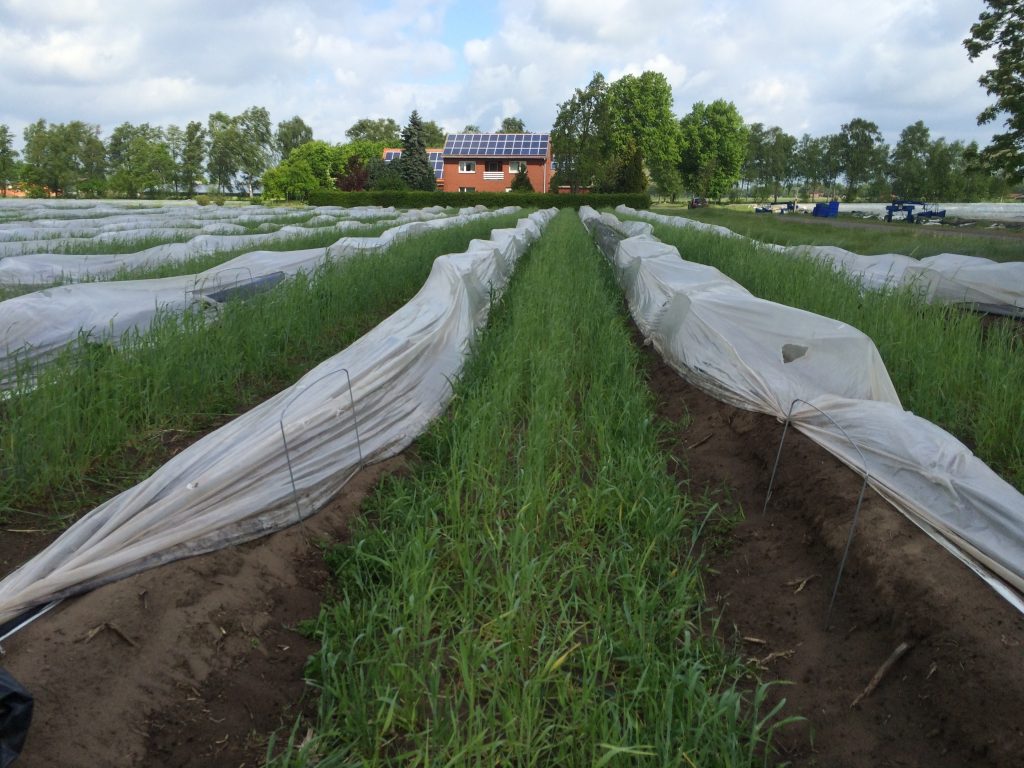
Sprinkling and shading can limit flowering and improve the quality of green asparagus. The spear contains more than 90% water and it is difficult to protect the skin from the aggression of the sun and wind and from too low hygrometry levels. In the greenhouse, two or three rounds of sprinkling during the hot hours maintains a humidity of above 80%, which is required to harvest a spear that is turgescent, un-wrinkled and of good calibre. Supplementing the moisture supply with sprinkling also lowers the ambient temperature.
Tall grass between the ridges creates a micro-climate, which reduces the risk of frosts and regulates the temperature by +1.5 degrees. The planting of long grass also reduces the effects of wind and prevents mulch from being blown away during storms.
5/ Night harvesting
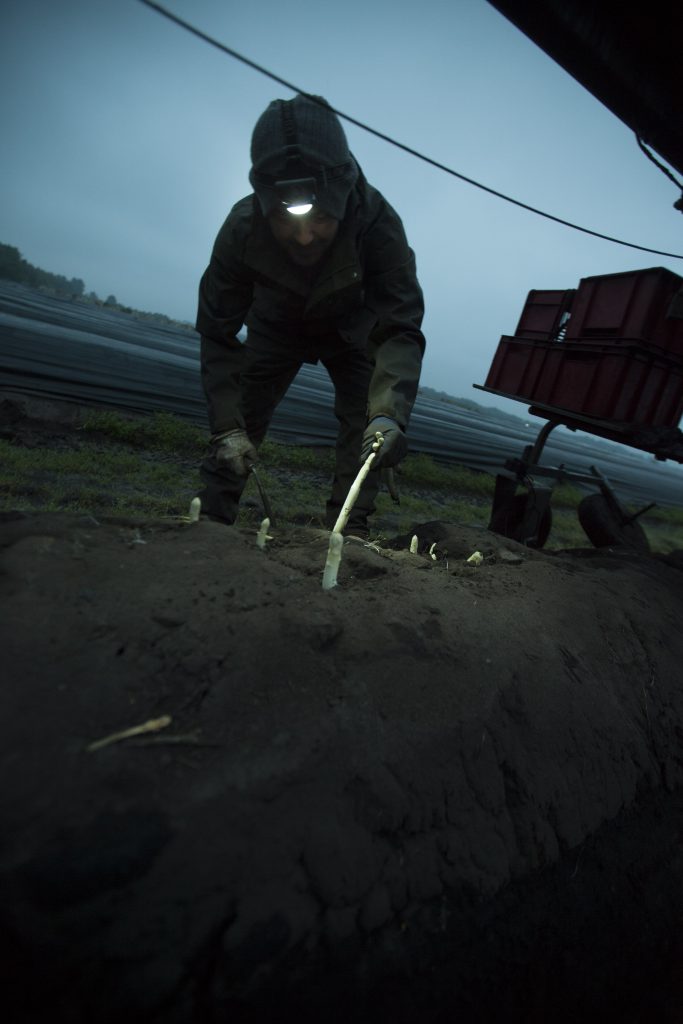
Harvesting at night protects asparagus from the daytime effects of the sun and dehydration. Asparagus harvested at night is colder, whiter and less fibrous. Professionals practising this technique find that spears harvested at night are 10oC cooler than those harvested in the middle of the day. The cooling and storage process is facilitated during calibration and packaging. Asparagus harvested at night is also of better quality: it is straight, less fibrous, and has better calibre. Night harvesting often takes place in calm weather to avoid possible damage caused by the often dry wind to green asparagus, which bends. Indeed, wind affects the skin on the exposed side of the asparagus, and this invisible wound results in curvature.
6/ Put the asparagus under cover
Like many other crops that suffer from increasingly frequent climatic “accidents” (hail, high winds, intense rainfall, etc.), planting asparagus in greenhouses is an increasingly feasible practice. At the beginning of cultivation, greenhouses can regulate climatic jolts and bring more precocity, which often equates to better selling prices. The gain depends on the structure (greenhouse, plastic) and the volume of the greenhouse (tunnel, multi-span).
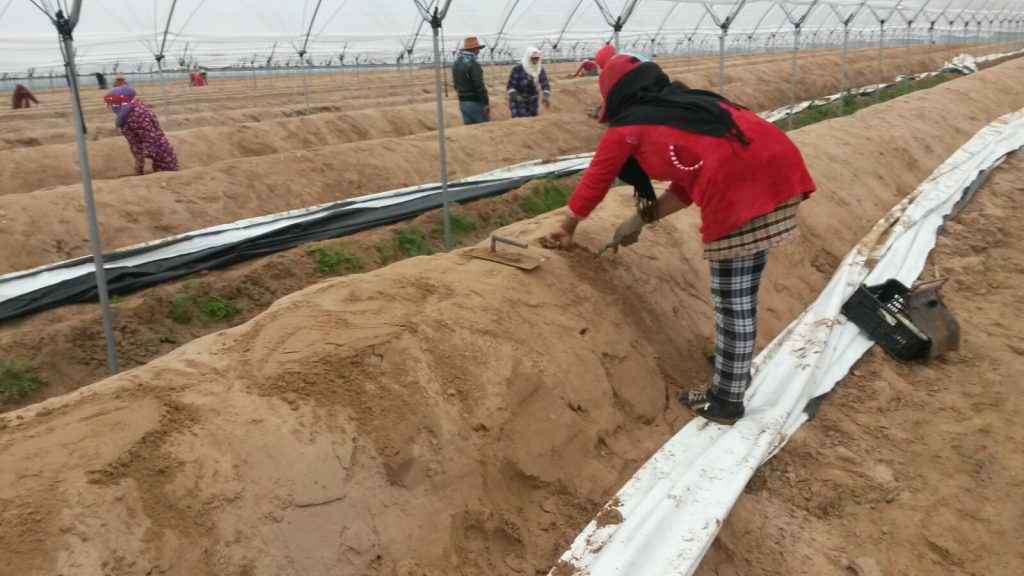
Mini-tunnels (Engels type) provide three weeks of precocity compared to the open field and 20 to 30% more yield per hectare.
Plastic tunnels, 5 to 9 m wide, provide 4 to 5 weeks of precocity and 30 to 50% more yield.
Multi-span tunnels provide a gain of 5 to 7 weeks of precocity with 40 to 70% more yield per hectare.
Yields are improved by the favourable conditions when growing in spring, but also by the longer vegetative period in the spring and autumn which increases the accumulation of reserves in the crown. Greenhouses also improve working conditions, making the harvest more comfortable and efficient thanks to the regularity and density of the spears to be harvested.
Today’s new horticultural greenhouses equipped with photovoltaic panels mean that we can enjoy the benefits of sheltered production with a limited financial outlay. Investments in greenhouse structure are supported by energy-producing partners. However, in this type of greenhouse, the percentage of shade can be very important and become a limiting factor in terms of the precocity, productivity and longevity of the crop. Hence, the design of the sheltering structure is also crucial to its success.
Read Also: The major challenges of climate change






